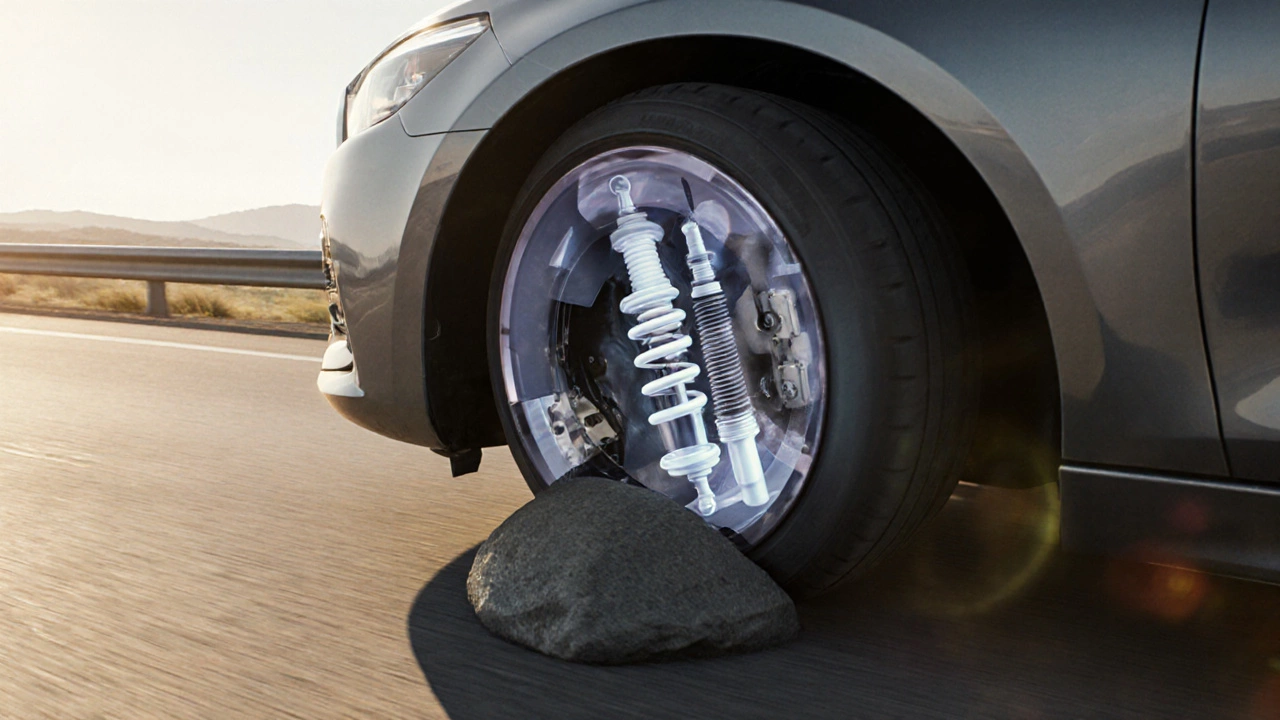Vehicle Suspension: How It Works and When to Fix It
When working with vehicle suspension, the system of springs, dampers and linkages that keep your car stable and comfortable. Also known as suspension system, it connects the wheels to the chassis and absorbs road shocks.
The heart of any vehicle suspension is a collection of moving parts. The first component you’ll hear about is the shock absorber, a hydraulic damper that controls spring motion and stops bounce. Paired with a strut, a structural component that combines a shock absorber and a coil spring into one assembly, they dictate how quickly the car settles after a bump. The coil spring, a steel coil that stores energy and supports vehicle weight works hand‑in‑hand with these dampers, while the sway bar, a torsion rod that reduces body roll during cornering keeps the chassis level. Together they form a network that balances comfort and control.
When the network starts to fail you’ll notice clues. A rattling or clunking sound when you drive over potholes usually points to a worn shock absorber or a loose strut mount. Uneven tire wear, especially on the inner or outer edges, often signals a broken spring or a misaligned sway bar. If the car leans excessively in turns, the sway bar may be worn or the bushings could be deteriorated. These suspension noise and handling symptoms are the language your car uses to tell you something’s off, and ignoring them can lead to faster wear on other parts like steering components and brakes.
Spot‑checking your suspension doesn’t require a garage lift. With the car parked on a level surface, push down on the front or rear bumper; the car should bounce once and settle. More than one bounce means a shock absorber is losing damping ability. Look under the car for any leaking fluid around dampers—oil on the shock body is a clear sign of failure. Inspect the springs for cracks or sagging. Finally, grab the sway bar links and wiggle them; play or looseness indicates worn bushings. Simple visual and tactile checks can save you a costly repair later.
If a component does need replacement, you have a few paths to choose from. Original Equipment Manufacturer (OEM) parts guarantee a fit that matches the factory design, but they can be pricey. Aftermarket options often provide the same function at a lower cost, and performance‑oriented brands may offer firmer damping or adjustable features. When swapping a shock absorber for a new one, it’s best to replace the corresponding spring as well, because the two are calibrated to work together. Skipping the spring could lead to poor ride quality or premature wear on the new damper.
Enthusiasts seeking a sportier feel often upgrade to adjustable coilovers, which let you fine‑tune ride height and damping force. Upgrading the sway bar to a thicker, stiffer version reduces body roll and improves cornering grip, but it can make the ride harsher on uneven roads. Always consider your daily driving conditions before going full performance; a balanced setup that offers a comfortable commute and confident handling is usually the sweet spot for most drivers.
Below you’ll find a curated list of articles that dive deeper into each of these topics. From identifying specific suspension noises to step‑by‑step guides on replacing shocks, struts, springs, and sway bars, the collection equips you with the knowledge to keep your ride smooth, safe, and responsive.

Four Main Types of Vehicle Suspension Explained
Oct 20 2025 / Suspension PartsLearn the four main vehicle suspension types-solid axle, MacPherson strut, double wishbone, and multi‑link-plus pros, cons, and how to pick the right one.
VIEW MORE
What is the Most Common Suspension in Cars?
Mar 4 2025 / Suspension PartsExploring the various suspension types, this article delves into what makes coil spring suspension the most prevalent in modern vehicles. Offering a balance of comfort and durability, this system is favored for everyday driving. Learn about its key components, advantages, and some tips on maintaining the suspension system. Discover why it stands out among other types and the basics of how it works.
VIEW MORE